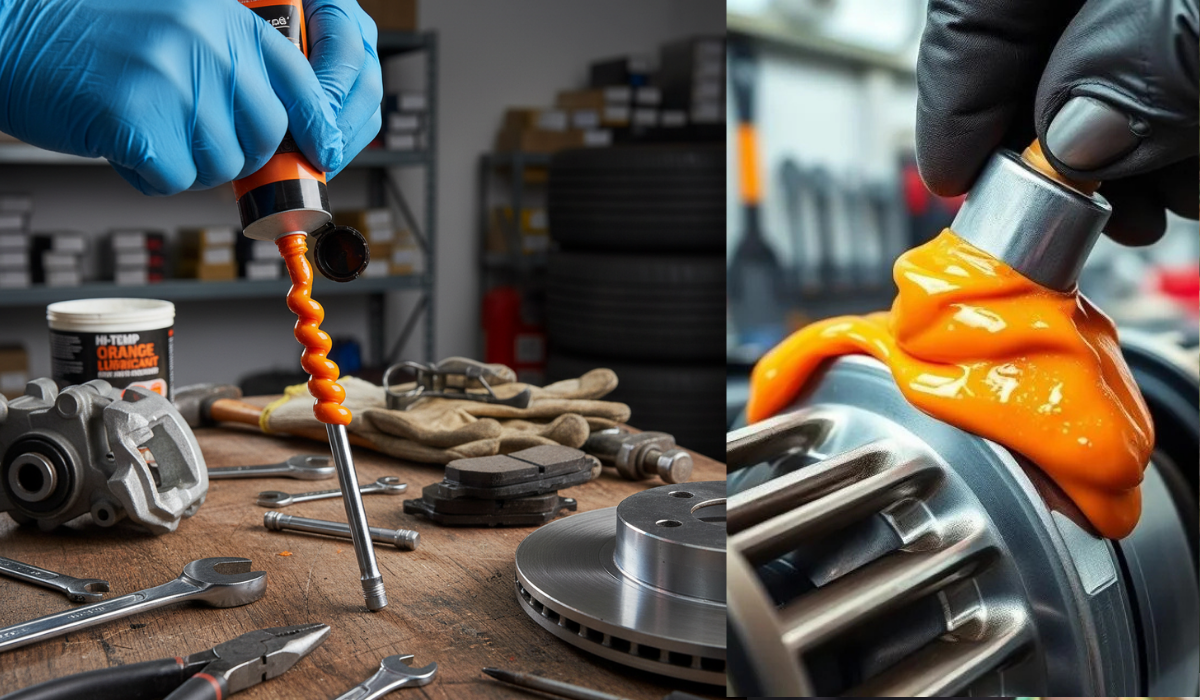Mechanical assemblies often require specialized lubricants to ensure smooth operation, reduce wear, and extend the lifespan of critical parts. One such specialized material is orange spline paste, a term that surfaces in discussions about brake lubricants, clutch spline greases, and high-performance automotive applications. While the phrase may sound unusual at first, it refers to a real category of products used in demanding mechanical environments, especially in automotive and industrial maintenance.
This article explores what orange spline paste is, why it exists, how it differs from other greases, and what best practices are associated with its use.
What is Orange Spline Paste?
Orange spline paste is not a generic household item; it is a specialized lubricant used primarily in high-stress and high-temperature environments. The term may refer to two slightly different categories of lubricants:
- Brake Lubricant (Orange Silicone Ceramic Paste):
Certain high-temperature brake greases, such as Permatex Orange Silicone Ceramic Brake Lubricant, are bright orange in color. These are designed for caliper pins, bushings, and other brake hardware where heat and pressure are extreme. - Spline Lubricant (for clutches and transmissions):
Clutch splines and transmission input shafts require a dedicated spline paste, such as Sachs spline grease or TS-60 SG spline lubricant. These are typically dark gray or metallic in appearance, but some distributors categorize similar high-performance greases under the “orange” family of products because they are marketed alongside orange brake lubricants.
It is crucial to distinguish between the two. Brake lubricants and spline greases are not interchangeable, and using the wrong product can cause severe mechanical issues.
Why Is It Called “Orange”?
The “orange” designation generally comes from product branding and physical appearance. Brake lubricants like Permatex Orange are bright orange for easy identification during application, ensuring mechanics can visually confirm coverage.
While most true spline greases are not orange, confusion sometimes arises because they may be sold by the same suppliers that handle orange brake lubricants. Additionally, under certain lighting conditions, some greases with ceramic or copper-based additives may appear to have an orange tint.
Properties of Orange Spline Paste
Whether in brake or spline applications, the defining properties of these lubricants are similar:
- High-temperature resistance:
Brake lubricants like orange ceramic paste can withstand temperatures exceeding 1600°F (870°C). Spline greases, while not exposed to the same radiant heat as brakes, must endure high frictional temperatures. - Anti-seize characteristics:
Both types of paste prevent galling, seizing, and excessive wear on metal-to-metal contact surfaces. - Corrosion protection:
Additives help protect steel and alloy components from moisture and oxidation. - Compatibility:
Brake pastes are typically silicone-based with ceramic particles, while spline greases are often lithium, molybdenum, or synthetic blends. This difference in chemistry is why cross-application is discouraged.
Applications of Orange Spline Paste
1. In Brake Systems
- Caliper Slide Pins: Keeps movement smooth, preventing brake drag and uneven pad wear.
- Pad Contact Points: Eliminates squealing and harsh vibrations.
- High-Heat Areas: Ensures lubricant stability even under extreme braking conditions.
2. In Transmission and Clutch Assemblies
- Clutch Splines: Allows smooth engagement and disengagement between the clutch disc and the transmission input shaft.
- Input Shafts: Reduces wear, prevents fretting corrosion, and ensures longevity of transmission components.
Key Differences Between Brake Paste and Spline Paste
| Feature | Orange Brake Paste (Permatex, etc.) | Spline Lubricant (Sachs, TS-60 SG, etc.) |
|---|---|---|
| Color | Bright orange | Dark gray, metallic, or neutral |
| Base Material | Silicone with ceramic particles | Lithium, molybdenum, or synthetic base |
| Primary Use | Brake components (pins, shims) | Transmission and clutch splines |
| Heat Tolerance | Up to 1600°F (870°C) | Lower but focused on pressure resistance |
| Application Risk if Misused | Can cause clutch slippage if used on splines | Can burn or carbonize if used on brakes |
This table emphasizes the importance of using the correct lubricant for the job.
Best Practices for Using Orange Spline Paste
- Confirm the product type:
Verify whether you are using brake lubricant or spline grease before applying it. - Use sparingly:
Excessive lubrication can cause unintended effects, such as brake contamination or clutch slippage. - Clean before application:
Always remove old grease, dirt, or corrosion before applying fresh paste. - Follow manufacturer recommendations:
Vehicle makers often specify which type of grease to use for splines and brakes. - Do not cross-apply:
Never use brake paste on splines or spline grease on brake parts.
Why Correct Lubrication Matters
Failure to use the correct paste can lead to significant issues:
- In brakes, the wrong lubricant may burn, wash away, or cause squealing.
- In clutches, improper paste can lead to binding splines, chatter, or total clutch failure.
Correct lubrication ensures smooth mechanical function, safety, and component longevity.
Informational FAQs about Orange Spline Paste
Q1. Is orange spline paste the same as brake grease?
Not always. Some brake greases are orange in color, but spline greases are usually metallic or gray. The term “orange spline paste” often comes from product confusion.
Q2. Can I use Permatex Orange Brake Lubricant on clutch splines?
No. Brake lubricants are designed for high-temperature brake hardware, not for clutch splines. Using the wrong grease can cause clutch issues.
Q3. What is the correct lubricant for clutch splines?
Manufacturers often recommend Sachs spline grease or TS-60 SG. These are designed specifically for spline interfaces.
Q4. Why are some brake greases colored orange or purple?
The color helps mechanics visually confirm application and coverage during assembly.
Q5. How often should spline grease be applied?
Usually during clutch replacement or transmission service. Brake lubricants, on the other hand, may be applied during every brake service.
Q6. Can generic anti-seize compound replace spline paste?
No. Anti-seize is not designed for the same frictional properties and can damage clutch or transmission operation.

